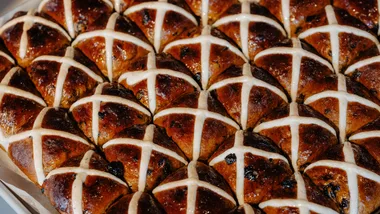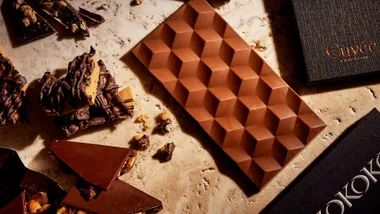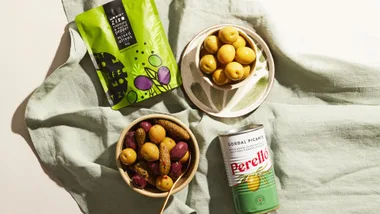There are two types of dough for making pasta: the first, made from durum-wheat semolina, a coarse flour high in protein, is used for pasta such as orecchiette, pici, fusilli, spaghetti, penne and rigatoni. The second style of dough, as seen in the recipe below, is one made of soft flour containing slightly less gluten and more starch. Combined with eggs, it makes a soft dough that is great for filled pasta like tortellini, agnolotti, tortelli and ravioli, as well as silky ribbons of pasta such as fettuccine, pappardelle and lasagne. The main secret of good pasta dough lies in the quality of the ingredients: organic flour and eggs are best.
Most pasta can be made by hand with tools found in the kitchen, but a pasta machine is a much simpler way to stretch and cut the dough. One of the best is the [Marcato Atlas 150](Marcato Atlas 150.|target=”_blank”|rel=”nofollow”) ($349).
Ingredients
400 gm (2⅔ cups) plain or “00” flour
4 eggs
1 tsp olive oil

Pile flour onto a dry (preferably wooden) surface. Form a well in the centre and add eggs and olive oil. Beat the eggs and oil with a fork and slowly incorporate flour by scraping against the flour wall.
Colours and flavours
Depending on the desired colour and flavour, add 10-15gm beetroot or broccoli powder, or 5-10gm chilli, charcoal or paprika powder to flour before mixing. For squid-ink pasta, add ½ tsp squid ink to eggs before mixing.
Note Vegetable and charcoal powders are available from select health-food shops. Squid ink is available from select fishmongers.
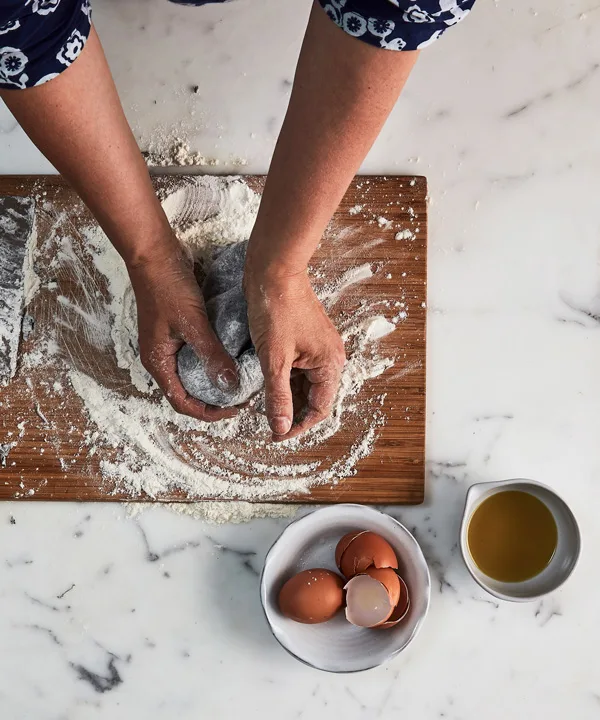
Knead dough until smooth and elastic (15-20 minutes). Kneading develops the gluten – the dough should bounce back slowly if you press on
it. Wrap it in plastic wrap and rest at room temperature for 15-30 minutes, or refrigerate for up to 5 days.

Divide dough into four, then, working with one piece at a time (cover remaining dough with plastic wrap to stop it drying out), flatten it with a rolling pin or the palm of your hand, dust lightly with flour and gently feed it through the pasta machine, starting at the widest setting.
Fold the two ends of the dough towards each other, then rotate dough 90 degrees and feed through the pasta machine again (this is called laminating, and creates a strong, structured dough). Laminate once or twice on the widest setting, then continue to feed dough through the pasta machine, reducing settings notch by notch, until the pasta is the required thickness (for the standard 1.5mm, you should be able to see your hand through the sheet of pasta).
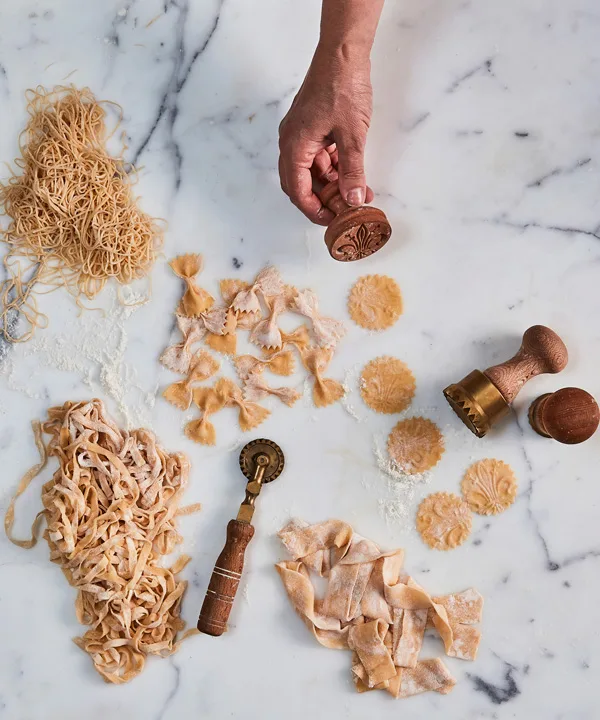
Cut pasta into preferred shapes (see below). Cook immediately, or dust with rice flour, then store in an airtight container and refrigerate for up to a week, or freeze it (frozen pasta can be cooked without defrosting it first). To dry pasta, leave it in front
of a fan for 4-5 hours, then store it in a paper bag at room temperature for up to 1 month.
Shapes
For fettuccine or capellini, feed 1.5mm-thick pasta through pasta machine with required attachment fitted to cut.
For pappardelle or tagliatelle, dust 1.5mm-thick pasta with flour, fold in half four times and cut into ribbons with a sharp knife.
For farfalle, cut 1.5mm-thick pasta into 2.5cm-wide strips, then cut at 4cm intervals with a fluted wheel and pinch the centre of each rectangle so they resemble butterflies.
For lasagne, cut 2.5mm-thick pasta into sheets to fit tray.
 Will Horner
Will Horner
